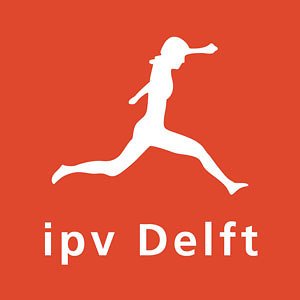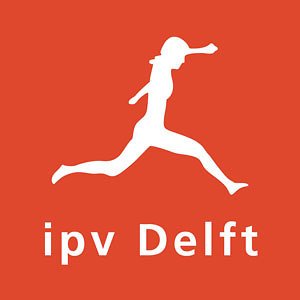Nigtevecht bicycle bridge
with interview below
with interview below
This impressively slender, 104 meter long bicycle bridge across the Amsterdam-Rhine Canal near the village of Nigtevecht provides a much needed addition to the local and regional recreational bicycle network. A wildlife connection was created at the same time and location, allowing wildlife to cross the canal and connecting two areas of natural beauty.
Befitting the location the bridge design is slender, transparent and low-key. Spatial integration of the long ramps provided quite a challenge, as the required 10 meter clearance results in very long ramps on either side of the canal.
The design provides for a flight of stairs on either side of the bridge, offering pedestrians a shorter route. Separating pedestrians and cyclists on the long ramps will also increase safety for both parties.
This project is a joint effort. We have worked closely together with main contractor Ballast Nedam and ecological consulting firm Bureau Waardenburg. The Province of Utrecht and the Province of North-Holland were the commissioning parties, who on their turn collaborated with Rijkswaterstaat and two city councils (De Ronde Venen and Stichtse Vecht).
The final design has come about thanks to public private neighbourhood collaboration, where locals and other relevant stakeholders were able to provide input.
more information?
call Ivo Mulders:
+ 31 15 750 25 73

project team
Ivo Mulders
Joris Veerman
Elmar van Cleynenbreugel
Jona de Bokx
Sam de Koning

Senior designer and project leader Ivo Mulders was very much involved in this project right from the start. Freelance journalist Diane Daniel asks him all about the spectacular design and how it came about.
It was a little different than usual. The clients were the provinces of North Holland and Utrecht and we worked through the general contractor and in conjunction with several other stakeholders. There already had been a long process of finding the right location, but there had been resistance from the local community. It’s a rural area and there were privacy issues among other things. The clients were very concerned about having local support. So much so, in fact, that in the bidding phase the design was secondary to creating a broad support for the connection itself. Being able to tell how we were going to get the support needed was key.
From the onset and throughout we talked to various stakeholders involved, such as the local community and the Dutch cycling organization Fietsersbond to make sure their concerns and wishes were taken into account. One of our main goals was to design a slender and transparent bridge structure in order to keep the bridge’s visual impact to a minimum. That was something most stakeholders could appreciate.
It had quite a big influence. Especially where it came to designing the ramps needed on either side of the canal. They’re quite long because of the required vertical clearance. On the east side, closer to the village of Nigtevecht, we wanted the ramp to be compact to keep it farther from nearby homes and to keep the view of the landscape as unaffected as possible. We did this by creating a ramp with hairpin curves on that side. Of course, we optimized both steepness and curvature of the ramps, taking the Fietsersbond’s advice into account.
Yes, later in the design phase, we invited residents’ feedback and input. One thing they noticed was that one of the ramps was close to another road, so we added an additional connection to that road at their request. They thought it could help in distributing the cyclists.
Also, we originally had lighting integrated into the handrail, but residents felt it gave too much light for a rural location. Furthermore, they were concerned that the difference in illumination levels on the bridge and off it would make cyclists feel less safe once they left the bridge. We ended up using small glow-in-the-dark discs that charge during the day and emit a soft light during the night. I think it’s a charming solution – high tech and low tech at the same time.
At a little over 100 meters, this was one of the longest spans we’ve designed so far, so that was interesting. We did part of the engineering ourselves in close collaboration with the structural engineer and we managed to make the bridge as thin and light in material as possible. We chose an arch because it was a typical bridge type for this canal, but we also wanted to show clearly that it was a bridge for cyclists and not for car traffic.
The main part of the bridge is very subtle, so there are no striking details that stand out. But that also was the goal – to have a limited visual intrusion on the green landscape. We wanted the bridge to look like it was a piece of engineering art. I think we definitely succeeded. For a large part that is due to the fact that we applied the structural principle of a network arch bridge, which is very efficient and requires less steel than the more commonly used traditional arch bridge.
Another thing I think worked out really well is that we wanted to create one continuous ribbon visually joining the ramps and the bridge. We used a concrete path for both so the bridge as a whole would feel like one single connection. Many people might not see that, but it’s one of the things I’m really proud we could achieve.
Overall, the width of the bridge deck allows for cyclists to stop and admire the view and although the ramps don’t particularly allow people to stop mid-way they do offer great views whilst cycling up or down.
We added staircases on each side of the bridge for pedestrians. They are located and designed in such a way that they offer good views of the surrounding landscape. In addition, both staircases have a viewing platform.
Adding the staircases allows pedestrians to more quickly access the bridge and increases safety as pedestrians are separated from cyclists. Together with the great views that’s a win-win.
Not so much, no. The wildlife connection was designed by landscape architect Bureau Waardenburg and involves things such as easy access points for animals on either side of the canal and vegetation chosen specially to attract more wildlife and increase biodiversity.
When the main span was put in place in the spring of 2018, it was a bigger event than I thought it would be. Of course, the clients and contractor were there, but I was surprised to see so many residents. What was even better, they were happy. The grand opening in September was a really big event. People were excited and enthusiastic, including those who had originally been sceptical. We certainly achieved the main project goal – to maximize support.
I did cycle over it one day in the fall. It was great to experience the design elements and how they really do work. I was surprised to see how many people were using it, not only cyclists but also pedestrians. That made me feel really proud indeed.

